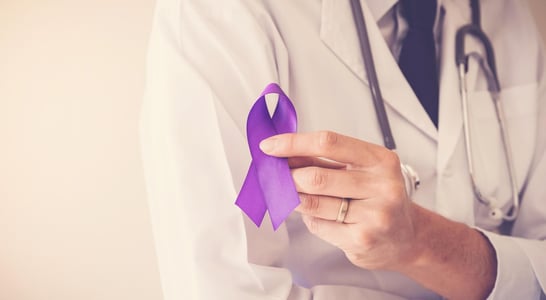
HIV Long-Term Survivors Day
Learn and raise awareness about HIV, a disease that once carried a short death sentence. Now, with proper treatment, HIV-positive people can live long, normal lives.
Let’s dive into a special day that highlights courage, hope, and an incredible journey of survival. HIV Long-Term Survivors Day, observed every year, stands out as a beacon of resilience.
How to Celebrate HIV Long-Term Survivors Day
Storytelling Slam
Kick off the celebrations with a storytelling slam, where survivors take the stage to share their powerful stories.
It’s an evening filled with raw emotion, laughter, and a whole lot of inspiration. Participants get to narrate their journey, weaving tales of challenges, victories, and everything that falls in between.
This event not only entertains but deeply connects everyone in the room, creating a space of mutual respect and admiration.
Funky Hat Contest and Gratitude Wall
Next up, inject some light-hearted fun with a funky hat contest. Encourage everyone to bring out their most outrageous, beautiful, or meaningful hats.
It’s a playful way to express individuality and add a splash of color to the day. Alongside, set up a gratitude wall. Invite attendees to pin up photos or notes of what they’re grateful for.
This wall becomes a vibrant tapestry of thanks, reflecting the diverse joys and blessings in their lives.
Retro Dance-Off and Cook-Off
Turn up the music for a retro dance-off featuring hits from the 80s and 90s. It’s a joyful celebration of survival, filled with nostalgic tunes and dance moves that have stood the test of time.
Pair this with a cook-off challenge, where survivors cook a dish that symbolizes their journey. It’s a tasty way to share stories, with each dish offering a unique glimpse into the resilience and journey of its creator.
Community Garden and Virtual Art Gallery
Conclude the celebrations by planting a community garden, where each plant represents a survivor’s growth and strength.
This living tribute grows over time, symbolizing the collective journey of survivors. Additionally, host a virtual art gallery showcasing works by or for survivors.
This online exhibition allows people from all walks of life to engage with the stories and emotions of long-term HIV survivors, bridging distances and spreading awareness far and wide.
Why Observe HIV Long-Term Survivors Day
It’s no ordinary day; it commemorates the date when the first cases of AIDS were officially reported in 1981. This day is set aside to honor and celebrate those who have lived with HIV for many years, acknowledging their enduring spirit and the challenges they’ve bravely faced.
But what does being a long-term survivor of HIV really mean? It signifies a life lived with a condition that once had little hope for a long future.
These survivors have navigated the early days of the epidemic, when fear and uncertainty were rampant, and effective treatments were a distant dream. Their survival into the present is a testament to their strength, as well as to the advances in medical science that have transformed HIV from a fatal diagnosis into a manageable condition.
These individuals have not only witnessed significant milestones in HIV research and treatment but have also contributed to breaking down stigma and fostering a better understanding of living with HIV.
HIV Long-Term Survivors Day thus plays a crucial role. It acknowledges the unique experiences of these survivors, celebrating their lives and contributions. The day also serves as a powerful reminder of the need for continued support, awareness, and research to further improve the quality of life for those with HIV.
It’s a call to action, urging us to remember those who have been on this journey for decades and to ensure they and future generations living with HIV receive the care, respect, and support they deserve. On this day, we honor their journey, reflect on the progress made, and recommit to the ongoing fight against HIV together.
History of HIV Long-Term Survivors Day
Not long time ago, in 2014 to be exact, a spark of recognition ignited. This wasn’t just any spark; it was the start of HIV Long-Term Survivors Day, a day that is now marked every year.
Why this particular date, you wonder? It takes us back to June 5, 1981, a day that history will never forget. This was when the world first heard about a mysterious illness, which we now know as AIDS.
Fast forward to 2014, and Tez Anderson, a warrior living with HIV since 1983, decided it was high time these survivors got their day of honor.
This day is no small affair. It’s a big shout-out to those who have journeyed with HIV for years, even decades. These folks have seen it all: the scary early days when hope seemed far away, the breakthroughs that brought light to the darkness, and the continuing fight for a future free from HIV.
They’re not just survivors; they’re trailblazers, educators, and the fiercest advocates you’ll ever meet.
So, when June 5 rolls around, it’s more than a date on the calendar. It’s a celebration of resilience, a testament to how far we’ve come, and a reminder of the journey still ahead.
It’s a day to listen, learn, and lift the voices of those who’ve been in the fight since day one. HIV Long-Term Survivors Day isn’t just about looking back; it’s about moving forward together with hope and determination.
HIV Long-Term Survivors Day FAQs
What are some unexpected cultural responses to the early HIV/AIDS epidemic?
In the 1980s and 1990s, underground art movements responded to the epidemic through activism.
For example, ACT UP’s “Silence = Death” campaign combined art and advocacy to raise awareness. This culture of creative resistance helped challenge stigma and drive public attention to the crisis.
What misconceptions exist about long-term HIV survivors?
Many believe long-term survivors are fully healthy due to medical advances.
However, many face lingering health challenges from early treatments and HIV-related stigma. The misconception undermines the complexity of their lived experiences and ongoing struggles.
Are there traditional foods or gatherings associated with HLTSAD in some communities?
In some circles, potluck dinners or shared meals have become a way to foster connection and celebrate resilience.
These gatherings offer long-term survivors and their allies a chance to reflect, share stories, and strengthen bonds.
How did HIV/AIDS activism shape modern healthcare advocacy?
HIV/AIDS activism brought patient advocacy into the spotlight. Groups like ACT UP pushed for faster drug approvals and patient-centered care.
Their strategies set the stage for healthcare reforms benefiting people with other chronic illnesses.
What role did the LGBTQ+ community play in supporting HIV survivors?
LGBTQ+ networks were crucial in the early epidemic, offering care and resources when broader systems failed.
Chosen families provided emotional support and organized fundraisers for medical expenses. Their efforts were vital to many survivors’ survival and well-being.
How do long-term survivors mark this day in unique ways?
Some survivors participate in oral history projects, documenting their experiences for future generations.
Others engage in wellness activities like meditation or art therapy, honoring their journeys of healing. These personal rituals make the day meaningful on an individual level.
What historical figures exemplify the long-term survivor experience?
Cleve Jones, a co-founder of the AIDS Memorial Quilt, has lived with HIV for decades.
His activism highlights resilience and the power of community. Figures like him show the importance of advocacy and hope in overcoming stigma and fear.
Why is mental health support essential for long-term survivors?
Many survivors face lingering trauma from losing friends and loved ones during the epidemic.
Survivor guilt and isolation remain common. Mental health support helps survivors process these challenges and reclaim a sense of purpose.
Are there symbolic items or colors associated with HLTSAD?
Though the red ribbon symbolizes HIV awareness broadly, some survivors incorporate personal symbols.
Memory quilts, for example, honor loved ones and reflect their own survival. These personal touches add depth to the observance.
How does HLTSAD tie into broader discussions about aging with HIV?
As survivors age, they face unique challenges like accelerated aging and healthcare disparities. HLTSAD sheds light on these issues, advocating for better support systems.
It underscores the need for age-specific resources and compassionate care.
Also on ...
View all holidaysNational Donut Day
Stop by Krispy Kreme, Dunkin’, wherever you get your donuts and grab a selection for friends, family, coworkers, and of course, yourself.
Hot Air Balloon Day
Cross an item off your bucket list and sign up for a hot air balloon ride. Afraid of heights? Read or Watch “Around the World in 80 Days”, or go see a festival.
National Gingerbread Day
Indulge in the sweet and spicy goodness of a holiday treat that's perfect for any occasion, whether baked into cookies or made into a house!
National Fish and Chip Day
Go out and get some slightly (or very) greasy, tasty fish and chips. Even in America, the stereotypical UK meal has taken root, and can be found everywhere.
We think you may also like...
National DNA Day
Ever since Watson and Crick’s discovery of the double helix, DNA has aided healthcare, science, even crime. Try a DNA kit, or read about the history of DNA.
National Epilepsy Awareness Month
Shining a light on a condition that deserves more understanding, helping break down barriers and stigma, and showing support for those affected.
World Psoriasis Day
Uncovering the complexities of skin health and exploring innovative treatments that offer relief and enhance quality of life.








